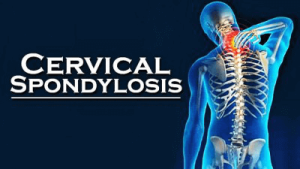Physiotherapy North York – P&C Rehab Services for Rehabilitation
Cervical Spondylosis
 Cervical spondylosis is a degenerative condition of the bones, joints and discs of the neck due to general wear and tear of aging. There may be abnormal growths or spur formation on the cervical vertebrae. These are called osteophytes. With age, fluid content of the disc is reduced and as a result it becomes stiffer, harder and eventually breaks. In some people, the nearby muscles, ligaments or nerves may become irritated or compressed by the degenerative changes.
Cervical spondylosis is a degenerative condition of the bones, joints and discs of the neck due to general wear and tear of aging. There may be abnormal growths or spur formation on the cervical vertebrae. These are called osteophytes. With age, fluid content of the disc is reduced and as a result it becomes stiffer, harder and eventually breaks. In some people, the nearby muscles, ligaments or nerves may become irritated or compressed by the degenerative changes.
Causes
Following are the major risk factors for the development of cervical spondylosis:
- Age – Cervical Spondylosis is a normal aging process. It usually occurs in middle age and elderly people.
- Occupation – Certain jobs may place the neck and neck muscles under stress. Such jobs include repetitive neck motions, awkward positioning or lot of overhead work. Computer users, gymnasts and athletes are at high risk.
- Neck and whiplash injuries- Previous injuries on the neck can increase the chance of cervical spondylosis.
- Genetic- Degenerative changes run more in some families while less in others.
Symptoms
- Neck pain
- Neck stiffness
- Pain may radiate down the forearm and arm
- Tingling and numbness in fingers if nerve roots immerging between the vertebrae are compressed.
- Headache that may originate from the neck.
- Vertigo and dizziness
- Very rarely cervical spondylosis results in pressure on spinal cord. Such symptoms include:
- Tingling, numbness and weakness in the arms, hands, legs and feet.
- Lack of co-ordination
- Difficulty in walking
- Change in muscle tone and muscle weakness
- Loss of bladder and bowel control
Diagnosis
- Physical exam- Your physician ask you to bend your head forward and to each side while putting slight downward pressure on the top of your head. Increased pain or numbness during this test is usually a sign that there is a pressure on a nerve in your spine.
- X ray spine- Anterior, posterior and lateral X ray views of the cervical spine is taken to investigate decrease joint space and degenerative changes in vertebrae.
- Magnetic Resonance Imaging (MRI) – This will give in depth imaging about changes in intervertebral disc, nerve root impingement and spinal cord compression.
- EMG (Electromyography) and NCV (Nerve Conduction Velocity) – These tests are done to examine nerve root function.
- Myelogram- This test involves generating images using X-rays or CT scans after dye is injected into the spinal canal. The dye makes areas of your spine more visible.
Treatment
- Physiotherapy/Chiropractic- A physiotherapist or chiropractor will teach you stretching exercises for your neck muscles. Strengthening exercises are incorporated in the program for the neck and shoulder which will help in limiting pain and to prevent further damage. Hot or cold packs are recommended to ease the pain. Many people benefit from the use of cervical traction which can help in providing more space within the spine if nerve roots are impinged.
- Drugs and medications- Over the counter drugs like Aspirin or ibuprofen are helpful in reducing pain. If over the counter pain relievers don’t help, your doctor may prescribe you muscle relaxants, narcotics or steroids to help reduce the symptoms.
- Surgery- If aforementioned conservative methods fail in treating the symptoms, surgery is recommended. Surgery involves removing of herniated disc or bone spur, laminectomy (removal of part of vertebra) or fusion of vertebrae.
If you are suffering from cervical spondylosis or have any questions regarding this condition contact one of the health professionals at P&C Rehabilitation Services.
